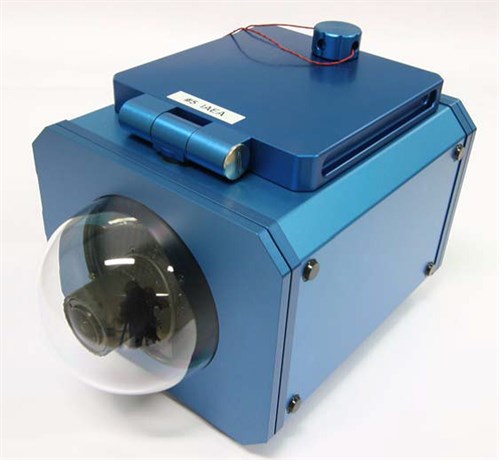The NGSS provides the complete surveillance infrastructure
needed to make use of optical image and equipment state of health
data to assist in the drawing of safeguards relevant conclusions.
Visual evidence of events is recorded and processed in a front end
camera and stored locally, or is forwarded to a data consolidator
unit where data are stored and in turn forwarded via a remote
monitoring connection (where allowed). At the back end,
surveillance review software allows for the analysis of image files
with automatic data filtering and preprocessing, and provides tools
to facilitate an efficient review by safeguards inspectors. The
entire NGSS was designed for ease of use and maintenance, with a
modular infrastructure that allows for simpler inventory
management, uncomplicated (plug and play) exchange of faulty
modules in the field and easier upgrading as new technologies
become available.
The NGSS, which is scalable to any number of cameras, has
advanced security features, low power consumption and solid state
storage media, and is highly reliable under harsh environmental
conditions. All safeguards sensitive data and parts are protected
inside an electronically sealed, tamper-indicating core module,
which allows replacement and installation of parts by third parties
without compromising data authenticity. The intrinsic sealing and
the advanced data security provided by public key cryptography
enable the NGSS to be easily used jointly with other inspectorates
or States without additional security or authentication
measures.
The NGSS can be configured as a single, all in one camera system
or as a scalable multi-camera system with dedicated, rack mounted
modules for each camera for data storage, data processing and power
supply. Furthermore, the NGSS supports various trigger signals from
other sensors or electronic seals, remote monitoring, high
resolution and full colour images, and picture taking rates as fast
as one image per second. Another advantage is a choice of lenses,
for example, a fisheye lens can be easily installed which will then
provide greater than 180° coverage. A single NGSS camera can record
up to four different fields of view simultaneously and can thus
replace several traditional cameras in certain situations. The NGSS
will be brought into routine use starting in 2012.


(Source: IAEA Safeguards Techniques and Equipment)